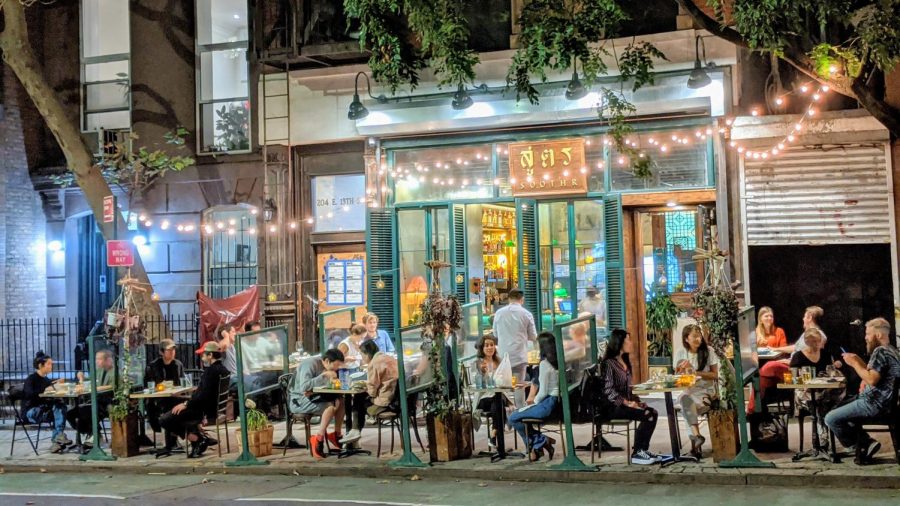With stricter measures, outdoor dining can stay
December 3, 2021
While the future of outdoor dining is currently a topic of debate in New York City, the hard truth is that outdoor dining is here to stay but needs stricter measures.
Before the COVID-19 pandemic, going out to eat implied dining indoors, admiring the restaurant’s interior, getting a glimpse of the outside view and being sheltered from the upcoming winter.
The pandemic changed the hospitality industry altogether.
Before the pandemic, the number of restaurants that were able to enter the outdoor dining scene was often catered toward a confined and high-end group of restaurants. Now, over 6,800 restaurants in New York City have reopened for outdoor dining, Architectural Digest reported.
About 100 people protested the issue of outdoor dining in Manhattan’s West Village during the summer as New York City Mayor-elect Eric Adams announced that outdoor dining structures should stay but with reevaluated spacing measures, according to The New York Times.
In an expression of opposition to outdoor dining, residents waved signs and shouted slogans like “Outdoor Dining Is Home Invasion.”
New York City Mayor Bill de Blasio has helped make outdoor dining accessible for restaurants by narrowing the lengthy and expensive licensing process down to an easy and instantaneous online application.
Restaurants have expanded to sidewalks, streets and parking spots.
According to Architectural Digest, the recent Open Streets initiative has dedicated over 2.6 miles to Open Restaurants in an effort to expand outdoor seating options for restaurants to the sidewalks and streets, promote social distancing and bounce back from the effects of the pandemic.
The Open Restaurants effort has succeeded in giving restaurants a chance to reopen and save about 100,000 jobs, according to The Gothamist. However, there are also problems with this change.
New York City residents have raised their concerns about certain restaurants exceeding the amount of space their outdoor dining structures take up, according to Eater.
The debate on the Open Restaurants program becoming permanent stirred a lawsuit from these residents, according to CBS New York.
Complaints within the lawsuit included noise, vermin and garbage accumulation. Sidewalks have become more crowded, impeding access to some New York City residencies.
The complaints from residents need to be taken seriously as dozens of neighbors are affected by this change. The noise causes disruptions for individuals who are trying to work from home, sleep or carry on with normal life.
Car owners in Harlem, specifically, report the loss of parking spots to outdoor dining structures disproportionately affects blue-collar workers. Elderly residents in Chinatown struggle to maneuver the clogged sidewalks.
These instances of inconvenience serve as just one of the many examples of how the future of outdoor dining is uncertain. Although outdoor dining has served as a successful temporary solution for many restaurants, the problem lies with the need for stricter measures.







